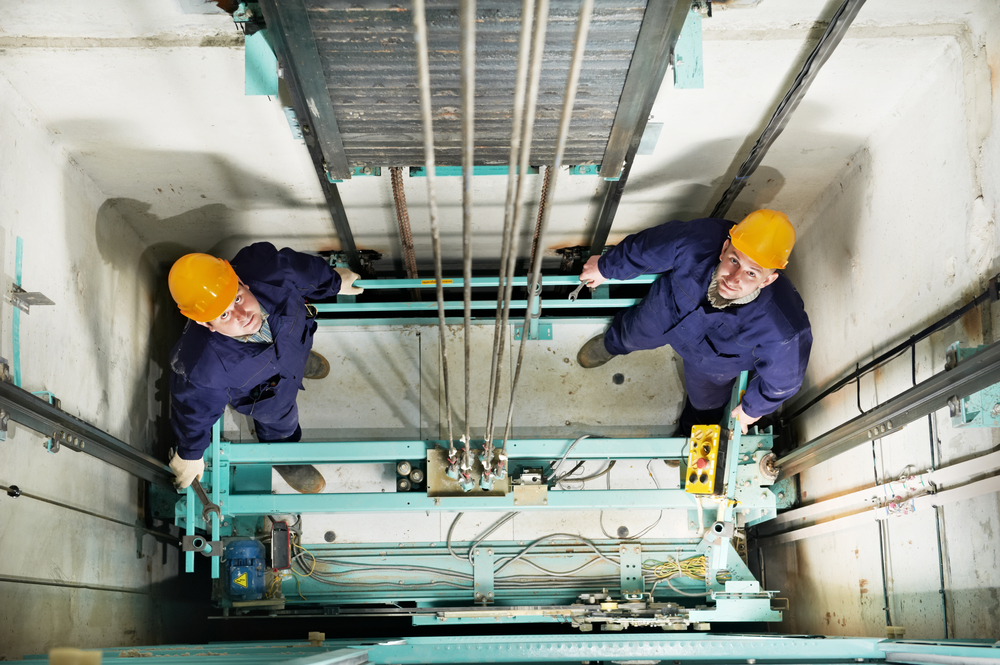In-Depth Elevator Solution Plan Incorporating Troubleshooting, Modification, and Calibration
In the world of upright transportation systems, elevators play a vital duty in ensuring efficient motion within structures. An extensive elevator solution plan that integrates calibration, adjustment, and troubleshooting is not simply a regular maintenance timetable; it is an extensive approach to raising the efficiency and safety criteria of these vital mechanisms.

Significance of Lift Maintenance
Lift upkeep is an important aspect of making certain the reliable and risk-free procedure of a structure's upright transport system. Routine maintenance not only lengthens the life expectancy of the lift however additionally minimizes the threat of unforeseen breakdowns, ensuring the safety and security of occupants. By sticking to an organized upkeep plan, structure proprietors and center managers can determine and address prospective problems prior to they rise right into significant problems, thus minimizing downtime and pricey repairs.
Routine maintenance tasks include lubricating and examining moving parts, testing safety features, and adjusting mechanisms to maintain optimal performance. Additionally, routine maintenance helps to ensure that the elevator adheres to safety regulations and standards established by pertinent authorities. Disregarding upkeep can bring about breakdowns, such as sudden quits between floorings, door problems, or electrical failings, every one of which can trouble individuals and jeopardize their safety.
Troubleshooting Techniques for Elevators
Ensuring the risk-free and effective procedure of a structure's vertical transportation system through regular upkeep additionally includes the application of effective repairing techniques for resolving possible lift problems promptly. Fixing strategies for elevators are critical to maintaining a trusted elevator service.
An additional important troubleshooting strategy is conducting a complete physical inspection of the elevator parts. This involves checking for any kind of signs of deterioration, loosened links, or unusual audios during procedure. By visually inspecting the lift machinery and electrical systems, specialists can identify possible problems prior to they intensify right into significant problems.
Furthermore, repairing techniques for elevators often include screening various safety functions, such as emergency situation brakes and door sensing units, to guarantee they are operating appropriately. On a regular basis examining these safety systems can assist protect against accidents and ensure traveler safety. By integrating these fixing methods into an elevator service plan, building owners can reduce downtime, minimize repair work expenses, and ensure a smooth vertical transportation experience for residents.
Accuracy Adjustments in Elevator Service
Applying specific modifications is vital in preserving the optimal capability and efficiency of elevator systems within a structure. lift servicing. Lifts are intricate mechanical systems that need thorough fine-tuning to guarantee effective and smooth operation. Precision changes play a critical function in boosting safety, minimizing downtime, and prolonging the life expectancy of lift components
When carrying out accuracy changes in elevator service, service technicians must possess a deep understanding of the system's technicians and characteristics. Tiny inconsistencies in leveling, positioning, or rate can lead to substantial problems otherwise attended to without delay. By carefully adjusting specifications such as door closing times, leveling accuracy, and acceleration rates, specialists can optimize the total efficiency of the lift.
Furthermore, precision changes assist protect against early deterioration on vital elements, such as cables, wheels, and control systems. On a regular basis arranged maintenance that includes fine-tuning adjustments can mitigate the risk of unexpected failures and pricey repairs. Lift company need to focus on accuracy changes as component of their thorough upkeep strategies to maintain the greatest standards of reliability and passenger safety.
The Importance of Calibration Processes

Calibration processes additionally play a vital function in lengthening the life expectancy of lift equipment. Routine calibration helps determine potential problems beforehand, enabling for prompt modifications or substitutes explanation before significant problems arise. This positive method not only protects against costly downtime yet also adds to the overall dependability of the lift system.
Moreover, calibration is essential for ensuring conformity with industry guidelines and standards. By adhering to producer referrals and industry best methods throughout calibration procedures, elevator company can ensure that the system satisfies all needed safety and security needs. Effectively adjusted lifts not just enhance user experience but also demonstrate a dedication to traveler safety and security and building code compliance.
Enhancing Elevator Efficiency and Long Life
To maximize elevator efficiency and extend its longevity, a comprehensive upkeep schedule is important. Regular maintenance not just makes sure that the lift operates efficiently however also assists in identifying possible issues prior to they escalate, consequently reducing downtime and pricey repair services.
Furthermore, carrying out modern innovations like IoT sensors and predictive upkeep software can provide real-time information on elevator efficiency, making it possible for anticipating maintenance scheduling and reducing unexpected failures. Upgrading older elevator systems with energy-efficient parts can also add to improved efficiency and reduced energy intake, resulting in set you back savings in the future. By prioritizing regular upkeep, adopting new innovations, and taking into consideration system upgrades, building owners can substantially boost lift efficiency and prolong its lifespan, making sure smooth procedures for visitors and occupants alike.

Conclusion
By carrying out repairing methods, precision modifications, and calibration procedures, lift service companies can enhance the overall capability of elevators. Investing in a thorough elevator service strategy is vital for taking full advantage of the lifespan of lifts and guaranteeing smooth transportation for developing residents.
Repairing methods for elevators are critical to preserving a dependable lift service.In addition, executing modern-day technologies like IoT sensing units and predictive upkeep software Check This Out can supply real-time information on elevator efficiency, enabling anticipating upkeep scheduling and decreasing unforeseen failures (lift servicing). By focusing on regular upkeep, taking on new innovations, and considering system upgrades, structure owners can considerably enhance lift performance and extend its lifespan, guaranteeing smooth operations for visitors and residents alike
By carrying out troubleshooting methods, accuracy changes, and calibration processes, lift solution providers can elevator repair improve the total functionality of elevators. Spending in a thorough elevator service plan is crucial for making best use of the lifespan of elevators and making certain smooth transportation for constructing owners.